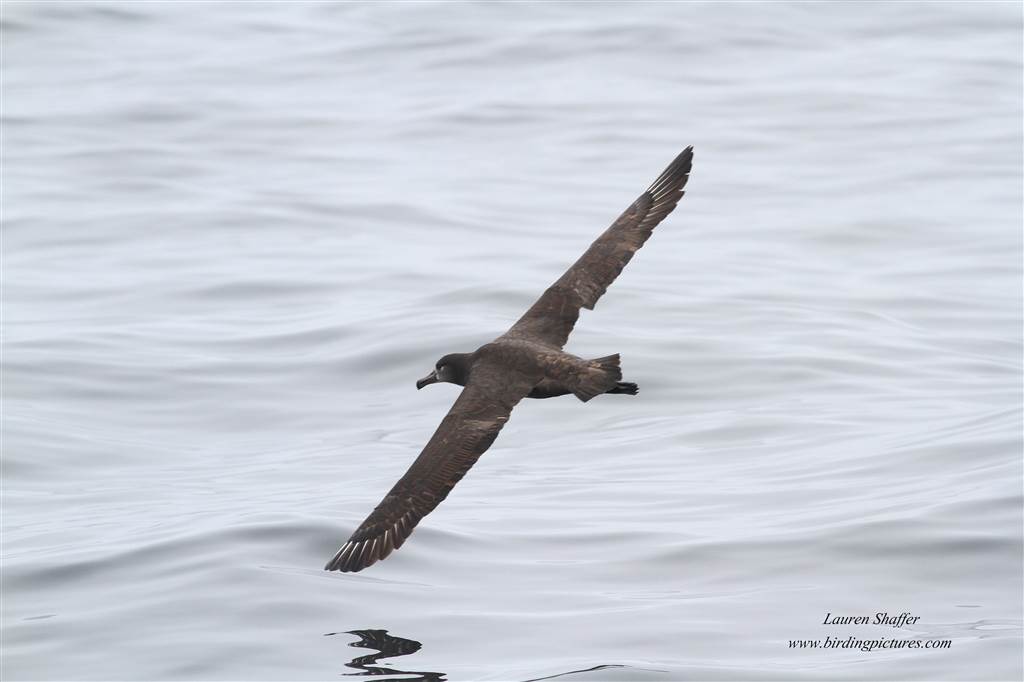
Like the Shearwaters, Albatrosses spend their entire lives at sea except when nesting. Their huge size, large bills, and long, slender wings set them apart from other sea birds. They have an incredible sense of smell which helps them find food across vast ocean areas. They feed on squid, octopus, flying fish and their eggs, and sometimes carrion.
The Albatross acquires more white on its head and neck with age. They mate for life and can live as long as 60 years if they can avoid being caught on fisherman’s lines and drowning. According to an article in Cornell’s Living Bird Magazine titled Masters of Wind and Sea,
As the newly baited hooks are tossed into the water, seabirds grab at the bait, hook themselves, get dragged underwater, and drown. In today’s large-scale, industrialized fishing operations, a single long-line coming off one boat can be 60 miles in length and contain upwards of 30,000 hooks. And thousands of long-line fishing vessels are scouring the world’s oceans. By one estimate, the world’s long-line vessels set about a billion hooks each year, resulting in the deaths of hundreds of thousands of seabirds.
Much work is being done in this area to amend the problems of “bycatch” by fishermen. Another threat to the Black-footed Albatross which has led to an Endangered Status, is the ingestion of plastics. The adults mistakenly feed them to their chicks and tens of thousands die every year. The work of photographer/artist Chris Jordan has displayed this graphically in photos and videos that are both startling and educational as to the scope of the plastic pollution and how it affects the mortality of albatrosses and the health of our world.
Of all the seabirds which were new to me on this trip, I have to admit that the Black-footed Albatross stole my heart when I witnessed the following scenes amidst the other screaming and fighting birds. It left me wondering if the two were parent and offspring.
Be sure to see previous posts, Parts 1, 2, and 3. If you are interested in booking a pelagic trip with Shearwater Journeys, check out their website. For Debi Shearwater’s blog and trip reports on this trip (Oct. 13, 2013) and others, click here.
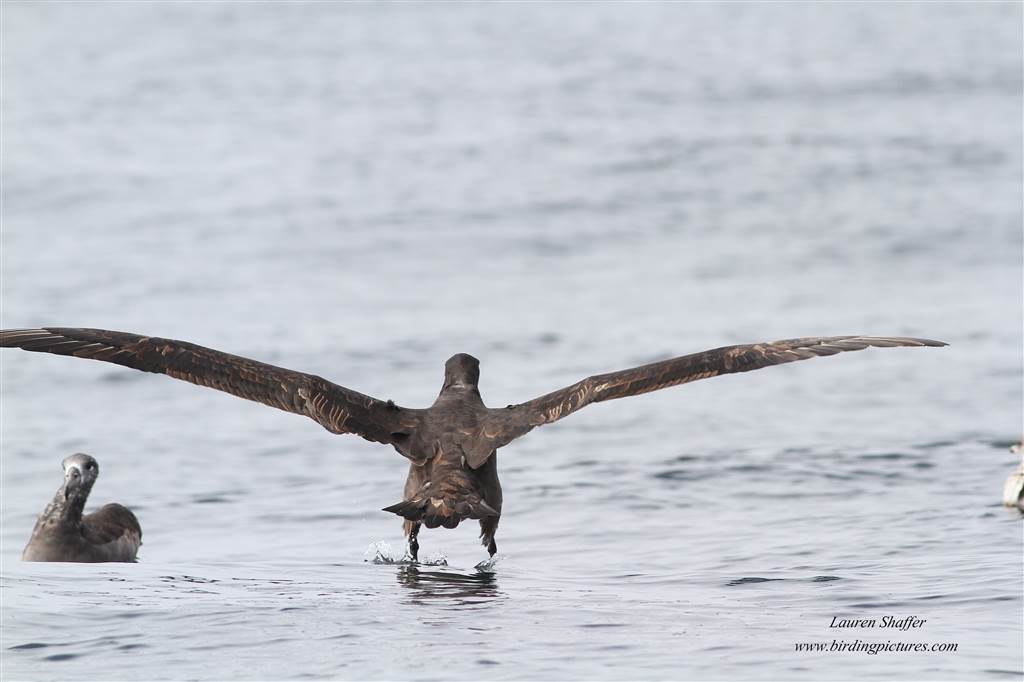
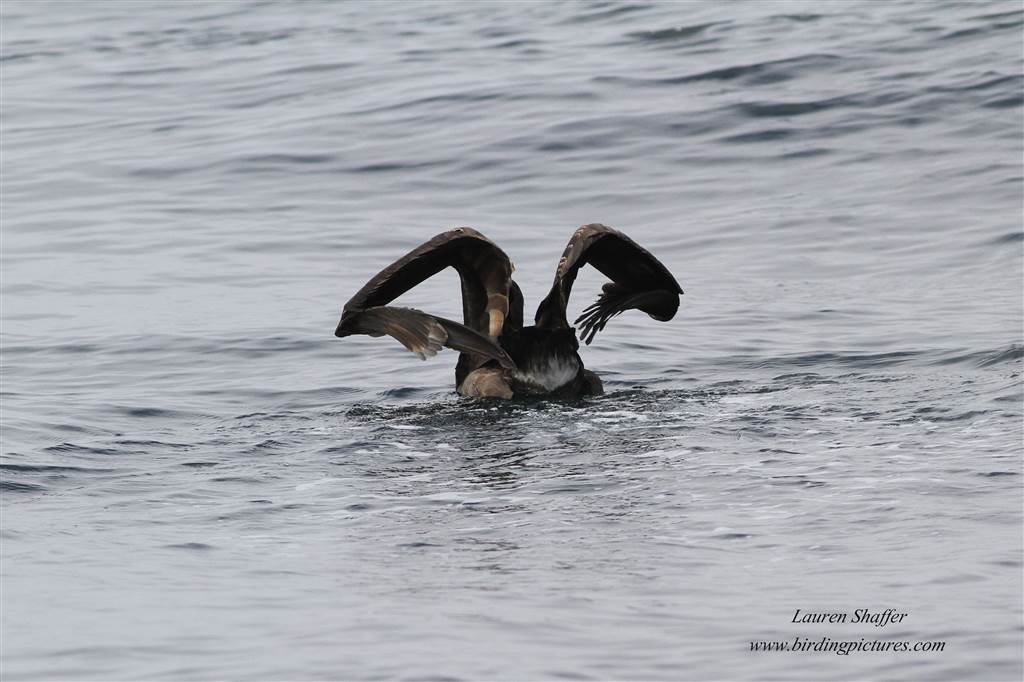
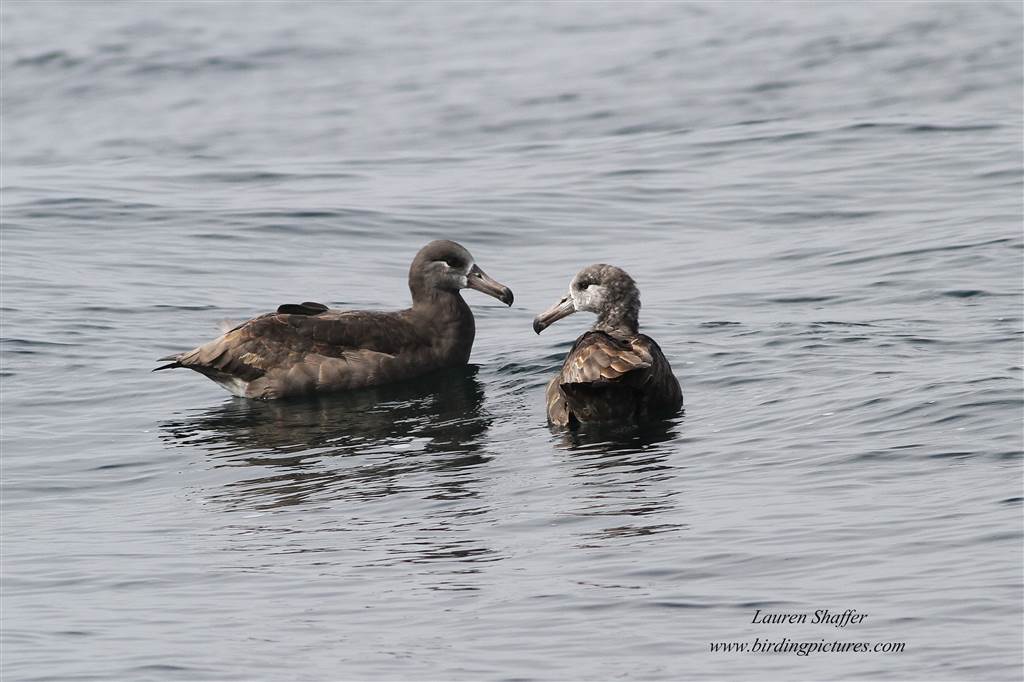
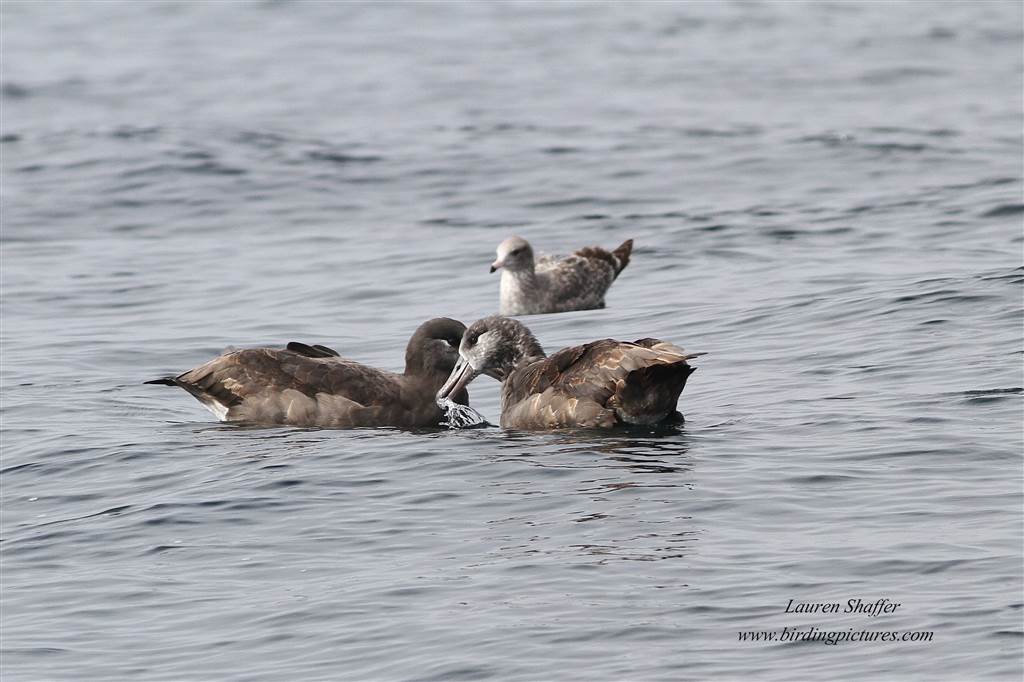
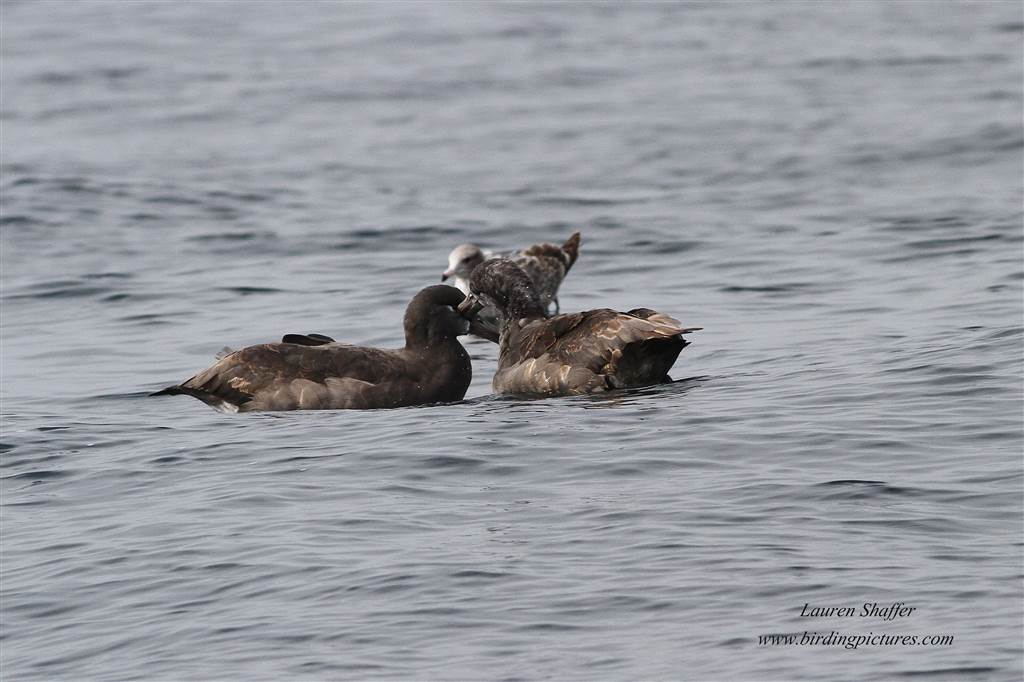
aimee foster
I’m looking to travel to Monterey Bay in March hoping to spot a black-footed albatross any suggestions on the best boating trip to take?
Lauren Shaffer
Definitely take Shearwater Journeys! http://www.shearwaterjourneys.com/